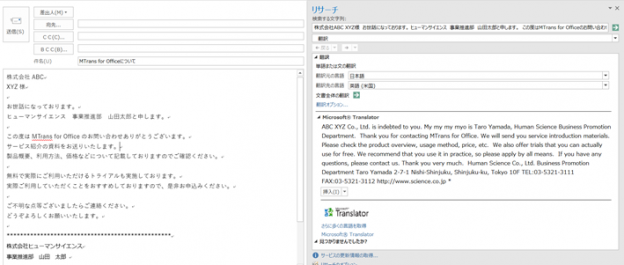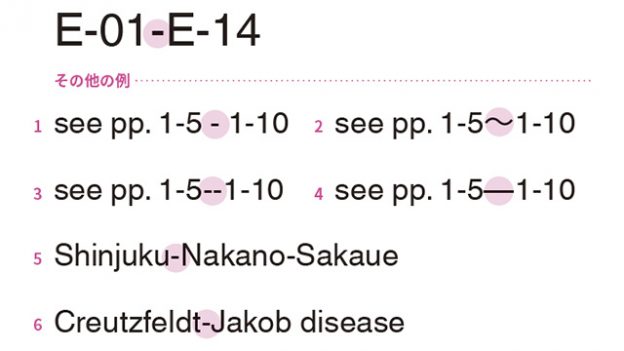
異なる種類の文書には、意図した読者と適切なメッセージを最適に伝えるために、異なる執筆スタイルが必要です。一部の文書、例えば法的契約書や技術マニュアルは、比較的厳格な執筆規範や業界固有の専門用語を持っています。優れたライターや翻訳者は、これらの文書の違いを理解し、作成される文書に最も適した執筆スタイルを活用します。ライターは個々のスタイルや好みの表現方法を持っていますが、さまざまな資料を扱うトップレベルのライターは、コンテンツに合わせて自身のスタイルを適応することが必要です。
But the type of document is only one factor that can inform which style of writing is optimal for any given job. As mentioned above, connecting with your intended audience is the ultimate goal of all writing and translation, and different grammar structures and word choices are more appropriate for different audiences. For example, using highly technical and industry-specific jargon in learning materials that are meant for beginners would not properly fulfill the educational purpose of the content, because the audience would have trouble understanding the meaning of the words. On the other hand, using childish language and over-explaining concepts in a document intended for experienced professionals could be interpreted as belittling and off-putting, once again snubbing the intended audience.
In this age of globalization and international markets, the skill of your audience may vary, not only in terms of the industry for which you are writing, but with the English language itself. There is often a vast difference between English that is natural and grammatically correct and the English that a business-level non-native speaker can understand without issue. This gap is especially relevant when writing materials for technical documents, such as product specifications and instruction manuals, which require not only that accurate information be conveyed, but that the information cannot be misunderstood.
In the following sections, I will introduce various writing conventions that may be appropriate for a native audience but can be confusing for those who speak English as a second language. When possible, try to avoid using these word combinations and grammar patterns when writing for a wide international audience.
1. Idioms and Colloquialisms
An idiom is a phrase or expression whose meaning cannot be inferred from its constituent parts. For example, although the verb "to fix" generally refers to the act of repairing something, to "fix someone's wagon" is an idiom for punishing a person or getting revenge. If a person has never encountered the idiom before, the likelihood of them misunderstanding this phrase is almost guaranteed, especially if that person is less familiar with English.
Colloquialisms are expressions that are characteristically informal and found in casual conversation. A prime example of this is the phrase "What's up." While the dictionary definition of the individual words would imply a question of what item is located above, the actual meaning of this phrase is a casual "Hello." It is not even a question, simply a greeting.
Here’s another example. The sentences below are both grammatically correct and have exactly the same meaning, but the first sentence uses casual idioms, while the latter is much more clear and accessible to a wide audience.
Example
| × When all's said and done, cut the engine. |
|---|
| ✓ When the process is complete, turn off the engine. |
Idioms and colloquialisms do not follow the definitions of their constituent words, so a person who speaks English as a second language and relies on additional language resources, like dictionaries, to aid their understanding of the text will have trouble with such expressions, even when the meaning and grammar are technically accurate. For this reason, they should be avoided when writing for an international audience.
2. Verbs Ending in -ing
動詞を-ingで終わるように活用することは、英語の一般的で有用な部分です。文法的には、それらはさまざまな役割を果たします。例えば、「to be」動詞と組み合わせて使用される動詞の一部として(ドアは閉まっている)、形容詞として(閉まっているドア)、名詞または名詞句の一部として(ドアを閉める)。しかし、この驚くべき多様性が、非英語話者向けのドキュメントで-ing動詞の使用を避けたい理由でもあります。英語を第二言語または第三言語として知っている多くの人々にとって、母国語に-ing動詞に相当するものがなく、潜在的な意味の多様性が曖昧で混乱を招く可能性があります。
While not every instance of -ing verbs can be removed from a text without also changing the meaning, here are some examples of how to rewrite sentences to avoid -ing verbs
Example 1
| × Do not touch the gears while the axle is rotating. |
|---|
| ✓ Do not touch the gears while the axle rotates. |
Example 2
| × Bundle the connecting cables between the motherboard and the front panel, and secure them with a cable tie. |
|---|
| ✓ Bundle the cables that connect the motherboard to the front panel, and secure them with a cable tie. |
Example 3
| × After entering your information into the required fields, click [Register]. |
|---|
| ✓ After you have entered your information into the required fields, click [Register]. |
Although a native speaker of English understands the context and meaning of –ing verbs intuitively and with confidence, a non-native speaker may misunderstand the usage, or at the very least, take time to decipher the part of speech that an –ing verb occupies, even when the usage is absolutely accurate.
3. Imprecise Terminology
Much like –ing verbs, some words in the English language are very convenient for their wide array of applicable meanings. But as with –ing verbs, relying on the intuition of your readers to understand the intended meaning of words with many possible interpretations can cause confusion, especially for non-native English speakers.
As an example, "with" is a preposition that has a wide array of meanings, which include accompanying something, having something, using a certain means to do something, and many others. Therefore, using a word or phrase that has a more precise meaning in the place of "with" may help clarify the intended meaning of the text, especially for people who are not native English speakers.
In the following examples, the initial sentence could technically be understood at least two different ways because ambiguous words/phrasing are used. Changing the sentence to use more precise language removes that ambiguity.
Example 1
| × Be sure to connect the headphone jack to the right plug. |
|---|
| ✓ Be sure to connect the headphone jack to the correct plug. |
| ✓ Be sure to connect the headphone jack to the plug on the right. |
Example 2
| × A warning on the screen appears during startup. |
|---|
| ✓ A warning about the screen appears during startup. |
| ✓ The screen shows a warning during startup. |
As a writer or translator, imprecise terminology is one of the hardest issues to correct, because recognizing the potential for misinterpretation is extremely difficult when you already know the intended meaning of every passage. Ambiguity is not very obvious when your mind already interprets the language in one specific way.
To help counteract this potential oversight, consistency is a helpful tool. Even if you cannot account for every possible interpretation of your writing, if you consistently use the same word to mean the same thing in every instance and do not use that word to mean other things, the likelihood of confusion is mitigated. So if, for example, you are using the word "display" as a noun synonymous with "screen" or "monitor," do not use any other noun in reference to that object, and also do not use "display" as a verb meaning "to show." If even imprecise terms are used consistently, readers of all skill levels can become more comfortable with your writing style and confident in its meaning.
Additional Benefits
In the modern era of booming AI development, writing in a style that is straightforward and easy for international English speakers to understand has the added benefit of being easier for machine translation engines to parse and translate, too. While machine translation on its own can never fully replicate the creativity, intuition, and consistency of human translation, it has become a very useful tool for speeding up the human translation process and for making text accessible to readers who do not speak the language at all. And because the quality of the results produced by machine translation is directly proportionate to the quality of the source material, adopting a style that minimizes misunderstanding by non-native speakers also minimizes the number of mistakes by machine translation engines, which have no cognitive ability to understand tone and context. This can aid your work’s ability to reach an entirely new readership.
Conclusion
Writing for an international audience takes a lot of conscious effort, but with practice, you can begin to recognize the more confusing or ambiguous aspects of English and discover more straightforward means of conveying the necessary information. Avoiding idioms, colloquialisms, and ambiguous language whenever possible, which includes –ing verbs, is a good practice to adopt when your audience includes non-native speakers.
Additional Reading
For more information on how and why language can be altered to accommodate for a particular audience, such as the inclusion of non-native speakers, I recommend further research into the topic of controlled natural languages. These language subsets include both restricted grammar and restricted dictionaries to remove ambiguity and complexity from a given language. Much of what was written here was inspired by the rules of the controlled language ASD Simplified Technical English, which is available for free online from the Aerospace, Security and Defence Industries Association of Europe at https://asd-ste100.org/.
Author Information

-
Rachel TackettMultilingual Translation Group
JP→EN Translation Reviewer- ・Before joining Human Science, Rachel worked for two years as an English teaching assistant, and then another two years as a writer and translator of Asian culture and entertainment news.
- ・彼女はその後、技術翻訳と技術マニュアルの制作において6年以上の経験を積んできました。
- ・She is currently involved in translating and ensuring the quality of technical documents from Japanese to English, including product manuals, help pages, and work manuals for SaaS and other major industries.
- ・She is also responsible for conducting quality assessment and verification of machine-translated Japanese to English translations.
























